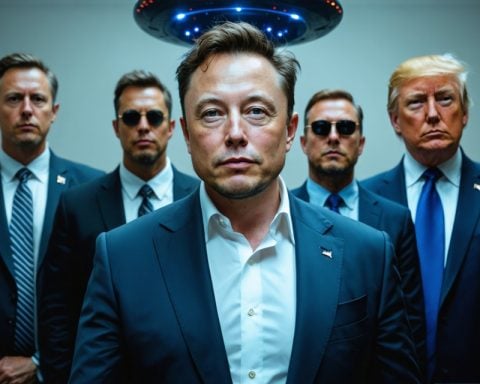The Evolving Telecom Landscape in Europe
In the picturesque setting of Davos, Switzerland, Liberty Global’s CEO Mike Fries shed light on the significant challenges facing Europe’s telecom industry. His insights during a CNBC interview at the World Economic Forum highlight the increasing competition from satellite internet providers such as Starlink and Amazon’s Kuiper.
Fries commended the ambition and resources behind these new entrants, acknowledging their potential to disrupt the market. However, he expressed doubts about their ability to replace established home broadband services, particularly due to the ongoing dominance of fixed broadband speeds. He noted that satellite technology struggles to achieve the same speed and reliability offered by traditional providers.
Recent discussions on X reflect Fries’ views. Many users noted Starlink’s achievements in rural areas while suggesting that its urban appeal remains limited. Some industry analysts are predicting a revenue decline for competitors like Viasat due to SpaceX’s new partnership with United Airlines, indicating that the effects of satellite internet extend beyond just residential markets.
The conversation further delved into regulatory challenges in Europe, where past policies favoring pricing control may hinder necessary infrastructure investments. Fries emphasized the urgency for reform to ensure a competitive environment that fosters innovation. He stated the importance of balancing traditional telecom services with new satellite competition, as the telecommunications industry stands at a critical juncture. As these dynamics unfold, the future of digital connectivity in Europe remains uncertain.
Transformative Forces in the Telecom Sphere
The rapidly evolving telecom landscape in Europe, underscored by the rise of satellite internet providers, signals a potential shift in societal connectivity and economic structures. With competition intensifying, especially from entities like Starlink and Amazon’s Kuiper, traditional telecom players face not just a market challenge but a redefinition of their operational frameworks. Access to fast and reliable internet is no longer a luxury; it is a prerequisite for participation in modern society, impacting everything from education to remote work.
Emerging satellite technologies might democratize access in rural regions, thereby promoting inclusivity. However, the implication is profound—urban areas must also adapt, as demand for higher bandwidth escalates with each technological advancement. Emerging patterns show that users’ expectations are evolving, and telecommunications companies might need to pivot to retain relevance.
The environmental effects of embracing satellite technology also warrant attention. Satellites involve significant carbon footprints during launch and ongoing maintenance, complicating the narrative of “green technology.” Furthermore, increased reliance on these systems raises concerns about space debris, a pressing global issue that could impede future technological advancements.
Looking ahead, the interplay of regulation, investment, and innovation will dictate future trends in competitiveness. Decisions made today regarding infrastructure investments could shape the telecommunications ecosystem for decades, underscoring the importance of forward-thinking policies to foster an environment conducive to both traditional and satellite technologies. The unfolding tale of Europe’s telecom landscape is a microcosm of broader global shifts, with implications that will resonate weitely in society and beyond.
The Future of Telecommunication in Europe: Challenges and Opportunities
The Evolving Telecom Landscape in Europe
As the telecommunications landscape in Europe undergoes rapid transformation, the insights from industry leaders such as Liberty Global’s CEO Mike Fries are crucial in understanding the challenges and opportunities ahead. During a recent CNBC interview at the World Economic Forum in Davos, Fries shared his thoughts on the increasing competition posed by satellite internet providers like Starlink and Amazon’s Kuiper, and the implications this has for traditional telecom services.
The Rise of Satellite Internet Providers
The emergence of satellite internet providers marks a significant shift in the telecom industry. Companies like Starlink have made notable strides, particularly in rural areas where traditional broadband options are limited. Despite these achievements, Fries cautioned that these satellite services may struggle to capture urban markets effectively, primarily due to their limitations in speed and reliability compared to established fixed broadband services.
Market Impacts and Predictions
The competition brought by satellite technology is not just limited to home broadband; analysts predict a broader impact on the industry. The recent partnership between SpaceX and United Airlines is expected to disrupt competitors like Viasat, potentially leading to revenue declines. This scenario highlights the evolving landscape where traditional telecom providers must adapt to retain market share against agile satellite competitors.
Regulatory Challenges and the Need for Reform
Regulations in Europe play a significant role in shaping the telecommunications market. Fries pointed out that past policies that favor pricing controls might be stifling necessary investments in infrastructure. There is an urgent need for regulatory reforms to create a conducive environment that encourages innovation and facilitates healthy competition. This balance is crucial as the telecommunications industry approaches a pivotal juncture.
Pros and Cons of Satellite Internet
Pros:
– Accessibility: Satellite internet can provide connectivity in hard-to-reach areas, improving digital access for many.
– Quick Deployment: Satellite systems can be deployed faster than traditional broadband networks in certain scenarios.
Cons:
– Speed Limitations: Current satellite technology often cannot match the speeds offered by fiber optics.
– Latency Issues: Satellite communications may experience higher latency, affecting activities like gaming and video conferencing.
Insights into Future Trends
Looking ahead, the telecommunications industry in Europe will likely see further integrations between satellite services and traditional telecoms. Companies may explore hybrid models, combining the strengths of both technologies to enhance service offerings. Additionally, as consumer demands evolve, there will be a continuous push towards faster, more reliable internet options.
Conclusion: Navigating the Future of Digital Connectivity
As the telecommunications landscape in Europe is continually reshaped by new innovations and competitive pressures, stakeholders must work collaboratively to address regulatory challenges and invest in future-proof infrastructures. The outcome of these developments will significantly influence the future of digital connectivity in Europe, setting the stage for an era of unprecedented competition and consumer choice.
For more insights and updates on telecommunications, visit Liberty Global.



















